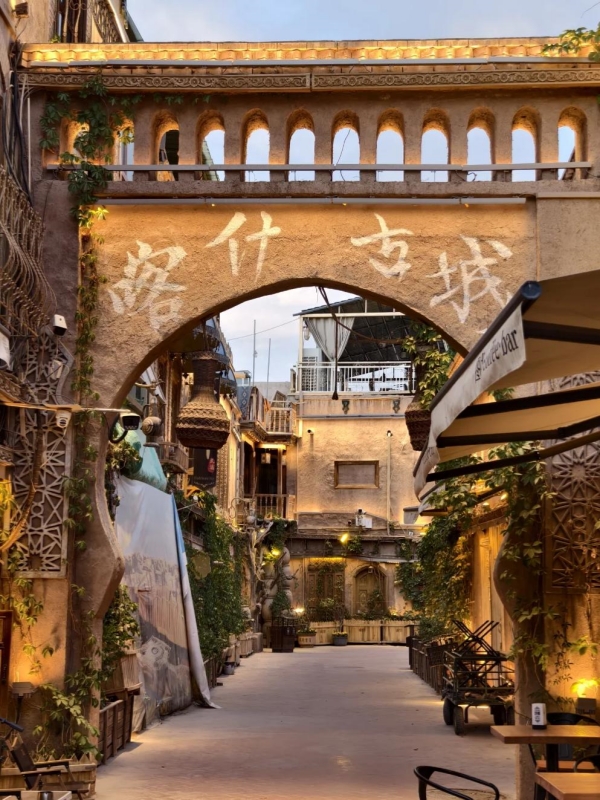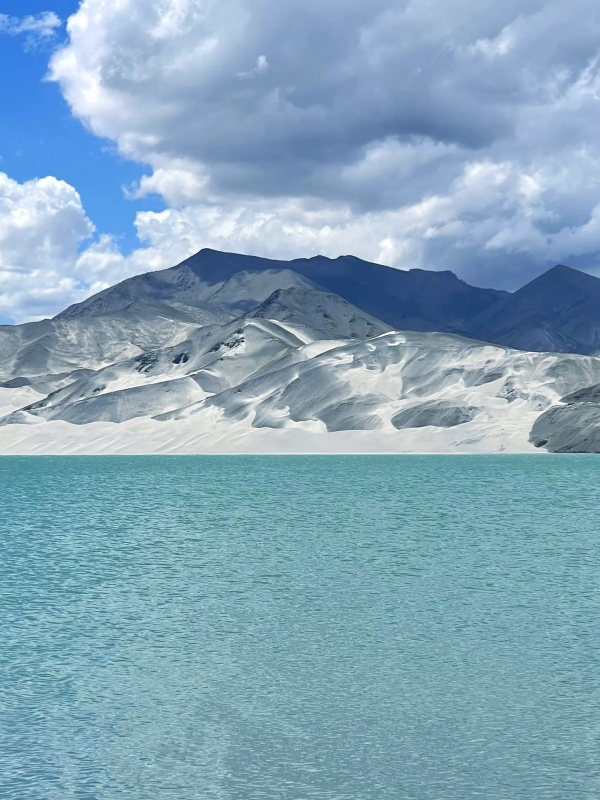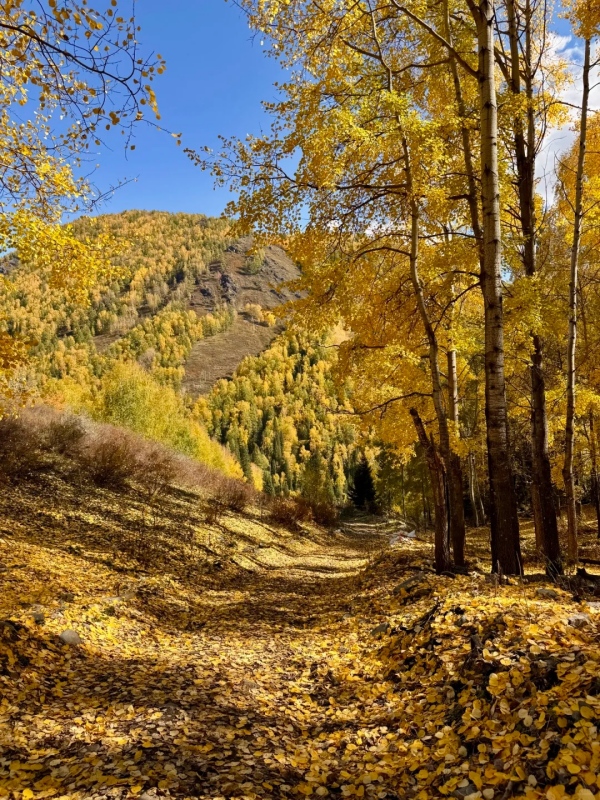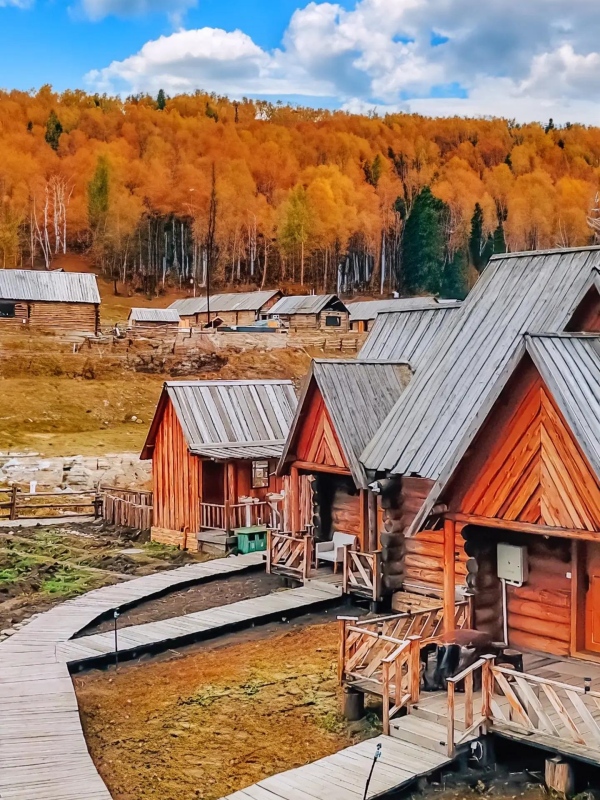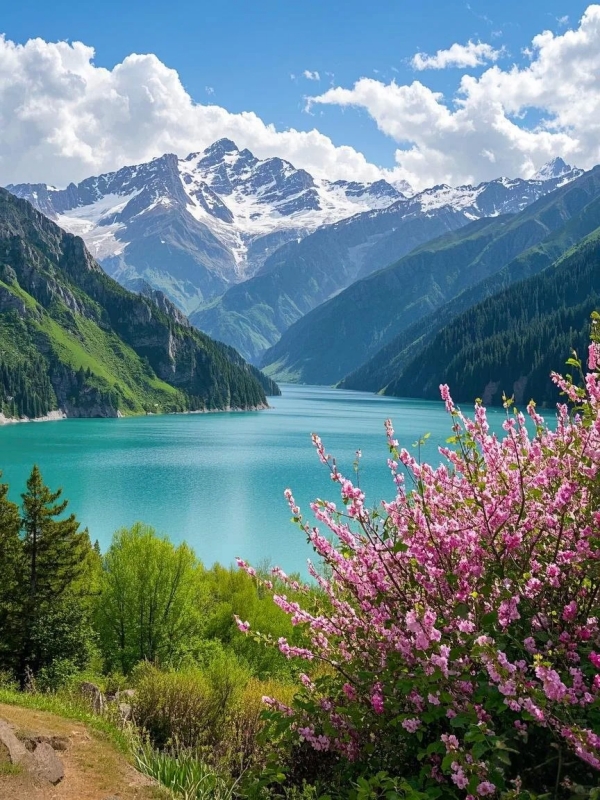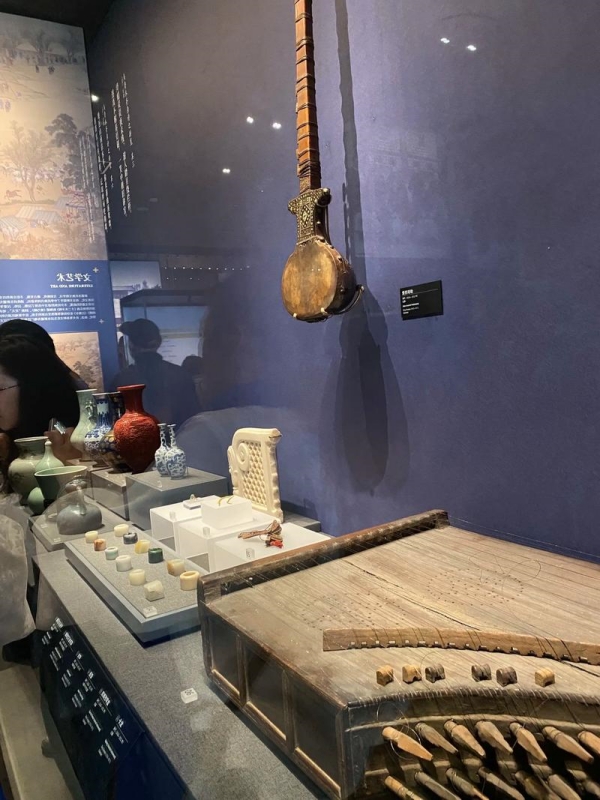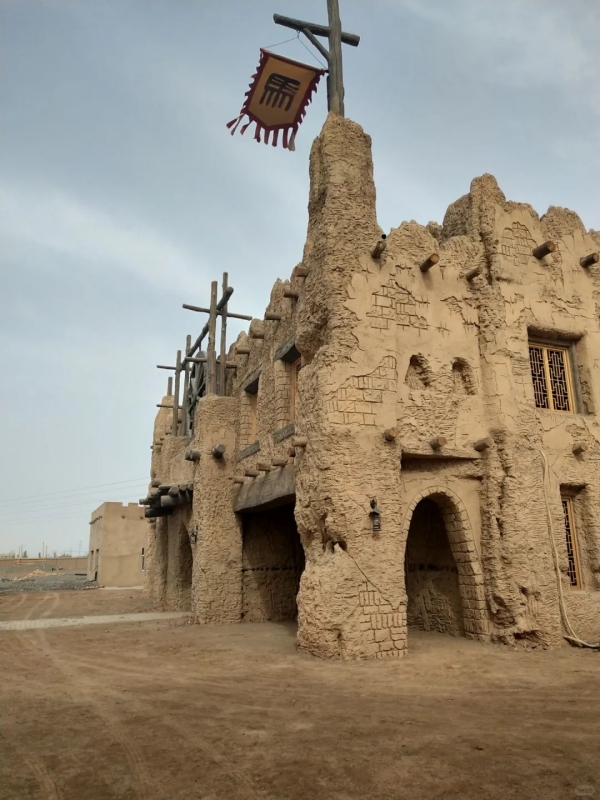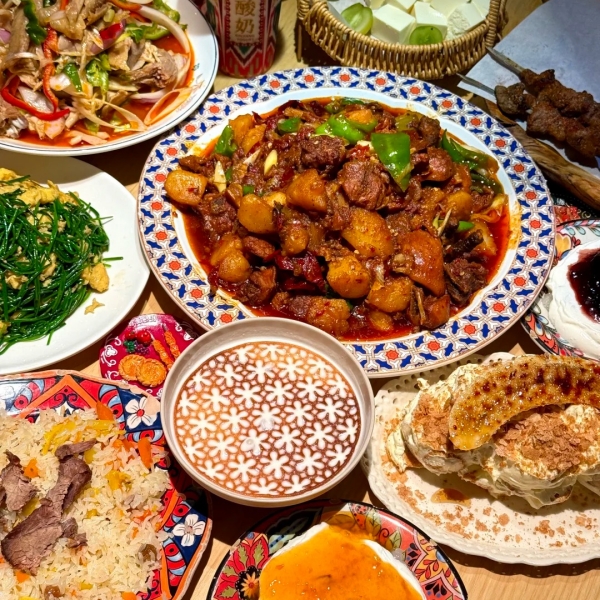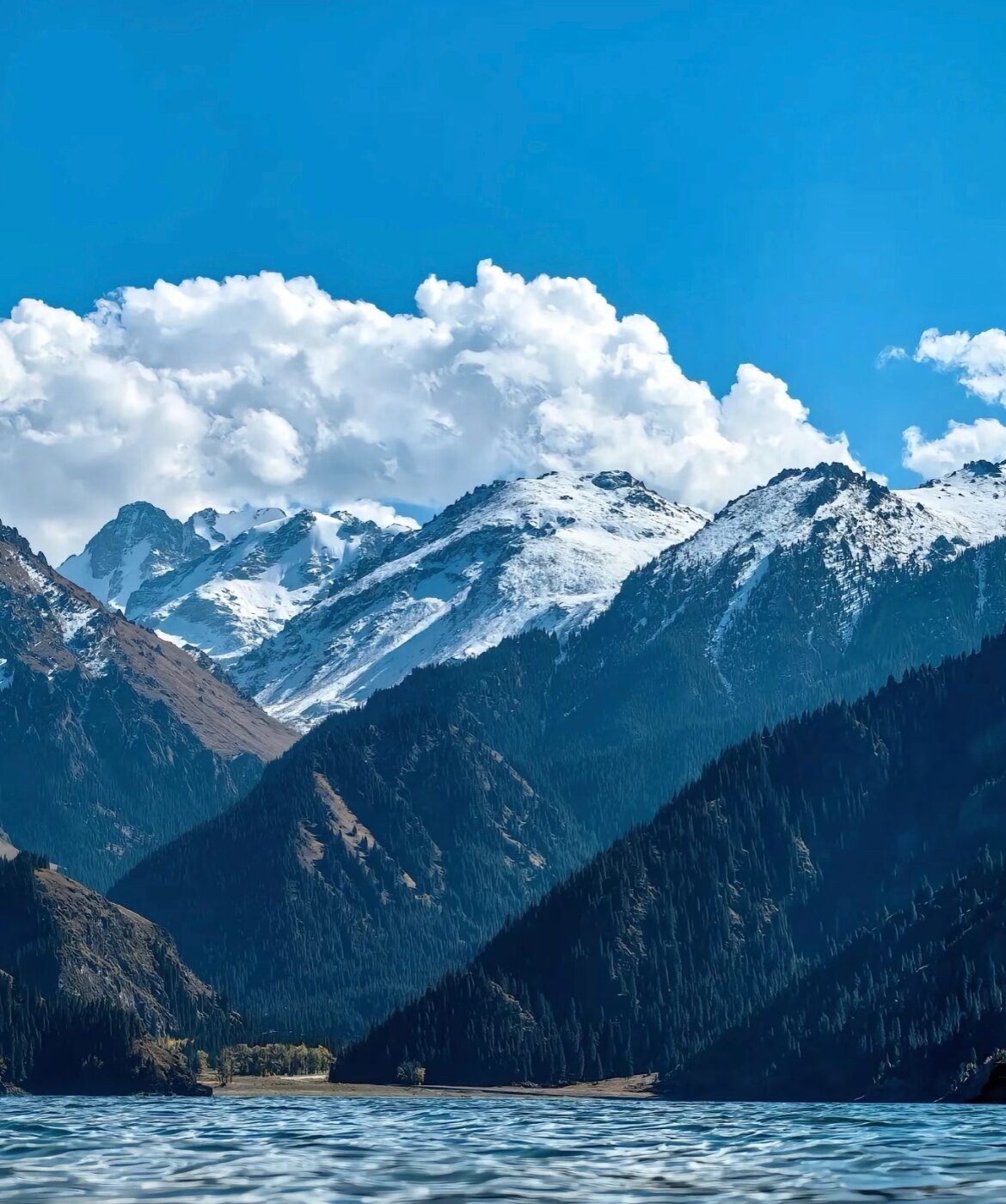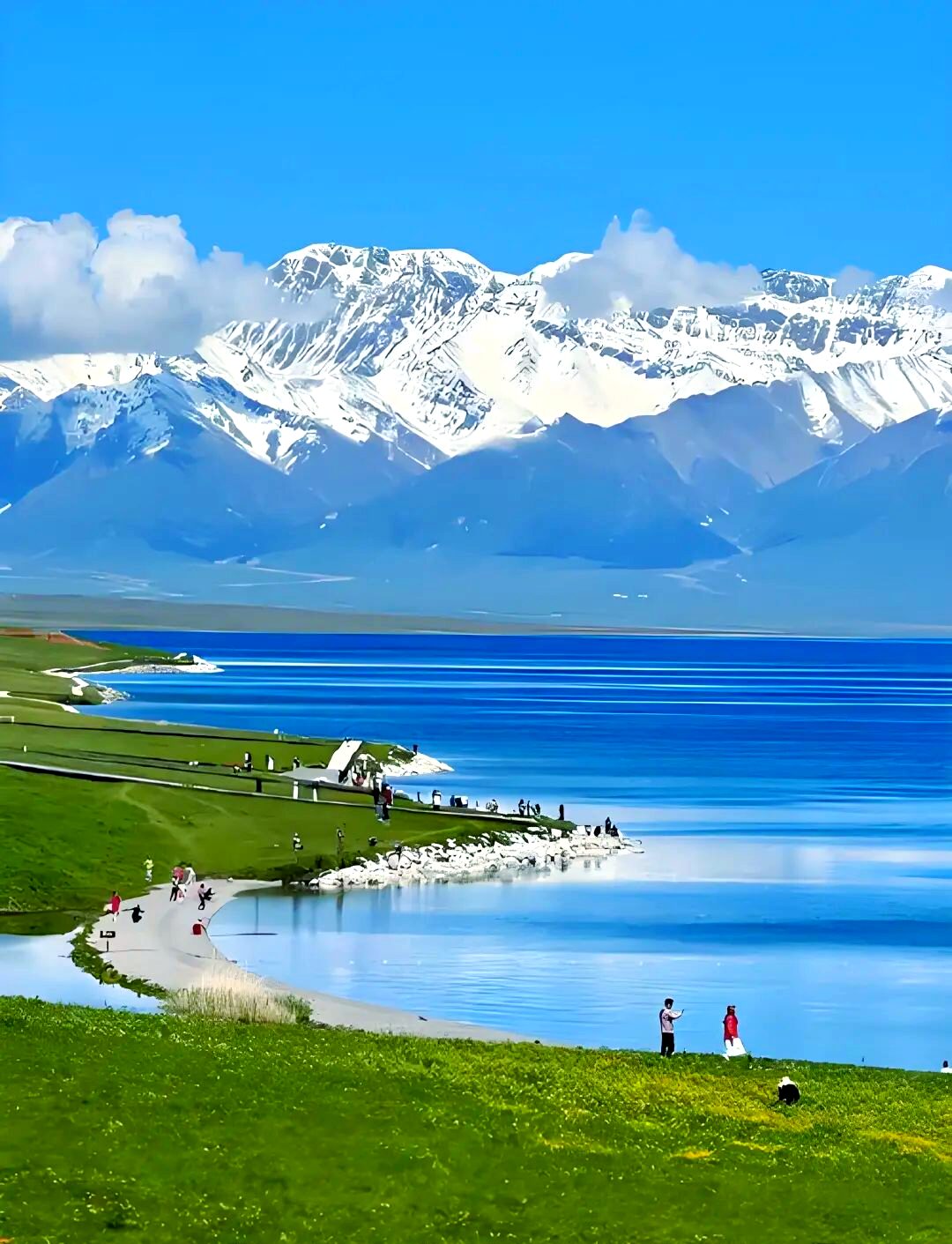
Sayram Lake
Xinjiang packs a rare mix of xinjiang attractions that range from glacier-fed lakes and alpine forests to ancient Silk Road towns and some of China’s largest deserts. The region’s scale can feel overwhelming, but its structure is clear once you understand how the north, south, and east each offer their own signature landscapes and cultural depth. This quick overview helps you see why travelers come for the scenery but stay for the living traditions, dramatic geography, and routes that feel unlike anywhere else in China.
We'll cover six main zones: Northern alpine wonderlands (Kanas, Sayram), Southern Silk Road heritage (Kashgar, Pamir), Eastern desert oases (Turpan), and Hotan's ancient routes—not just some random list of xinjiang attractions—so you can actually plan a real trip. You'll get honest takes: what's worth the trek, what's overhyped, and where your money goes. Best times, how to dodge crowds, common screw-ups—it's all here.
Understanding Xinjiang's Regions: Which Should You Visit?
Xinjiang’s regions offer distinct travel vibes, and understanding their differences helps you plan smarter. Each area features standout xinjiang attractions, from alpine lakes to ancient Silk Road towns. Here’s a quick look at what each region brings to the table.
| Region | Highlights | Best For | Best Season | Vibe |
|---|---|---|---|---|
| 🌲 Northern Xinjiang | Kanas Lake, Hemu Village, Sayram Lake | Nature lovers, photographers | Sept–Oct | "Switzerland meets Mongolia"—wide, wild, scenic |
| 🕌 Southern Xinjiang | Kashgar Old Town, Pamir Highway, desert adventures | History buffs, culture seekers | Aug–Oct | Central Asian bazaar energy + high plateau drama |
| 🍇 Eastern Xinjiang | Turpan ruins, Flaming Mountains, grape valleys | History fans, fruit lovers | May–Jun, Sept–Oct | Classic desert-oasis Silk Road atmosphere |
Quick Planning Tip: 💡 Most first-timers do either the Northern loop (Urumqi-Kanas-Sayram) OR Southern route (Urumqi-Kashgar-Pamir). Both need 7-10 days minimum. Trying to hit everything? You'll spend more time in transit than actually seeing stuff.
Kashgar — The Pearl of the Silk Road
- Kashgar
- White Sand Mountain & White Sand Lake
- Karakoram Highway (KKH)
Southern Xinjiang is where China feels least like China. Here, Uyghur culture dominates, Islamic architecture fills city skylines, and the Pamir Plateau reminds you that Central Asia is just over those mountains.
If you only visit ONE city in Xinjiang, make it Kashgar. This 2,000-year-old oasis city is where the Silk Road's northern and southern routes converged, and today it remains the beating heart of Uyghur culture. Seriously—skip this and you've missed the point of Xinjiang entirely.
Kashgar Old Town — Living History in 2,100 Alleyways
This isn't some reconstructed theme park—60,000+ Uyghurs still live in these 2,100+ alleyways. You've got earthen houses with carved wooden balconies, some 600+ years old. Getting "lost" is part of the experience, and honestly? The deeper you wander, the better it gets.
My third turn down a random alley led me to a tiny workshop where an 80-year-old Uyghur craftsman was hand-hammering copper pots—same technique his grandfather taught him. He invited me for tea without speaking a word of English. These moments don't happen in the touristy sections near the main gates.
White Sand Mountain & White Sand Lake — Desert Meets Alpine
Imagine: Brilliant white sand dunes rising against turquoise-blue water, backed by snow-covered peaks. This surreal landscape allegedly inspired the "Journey to the West" scene where Tang Monk meets Sandy the Sand Demon.
Tashkurgan & Pamir Highway — One of the World's Most Epic Roads
The Karakoram Highway (China-Pakistan Friendship Highway) is one of the world's most spectacular roads. You'll pass:
- Karakul Lake — 3,600m altitude, sitting at the base of Muztagh Ata (7,546m). The mirror-like reflection of snow peaks in dark blue water is Xinjiang's most iconic photo
- Taheman Wetland — Pamirs' ecological jewel, where marshes meet mountain backdrop
- Stone City Ruins — 2,000-year-old fortress perched dramatically on clifftop
- Alaer Golden Grassland — Sunset turns grass gold; Tajik yurts dot the landscape
Altitude reality check: You'll reach 3,600-4,000m. Mild altitude symptoms (headache, breathlessness) are common. Bring plenty of water, warm layers (temperature drops fast), altitude sickness pills if you're sensitive, and sunscreen (UV is intense at high altitude).
Kanas — Northern Xinjiang's Alpine Jewel
- Kanas Lake
- Birch Forests
- Hemu Village
Northern Xinjiang is where mountains meet meadows, and autumn turns hillsides into a canvas of gold, orange, and red. This is Xinjiang's dramatic, pristine side—think Switzerland, but wilder and way less crowded.
Kanas Lake sits up near the border with Russia, Mongolia, and Kazakhstan. At 1,374 meters deep, it's one of China's deepest alpine lakes, and in autumn? The birch forests turn gold, the larch trees go orange, and photographers lose their minds trying to capture it all.
Kanas Lake Scenic Area — Autumn's Grand Show
The lake itself is stunning—turquoise water, mountain reflections, morning mist. But it's the surrounding valleys that steal the show. Take the shuttle to Guanyutai (Fish-Watching Platform)—1,068 steps straight up, but the panoramic view of the winding lake is worth every burning quad muscle.
Real talk: The scenic area is huge and well-developed, which means crowds during peak season. September 20-30 is insane—like shoulder-to-shoulder on viewing platforms. Go early October for thinner crowds and still-good colors, or risk late September for peak foliage. After soaking up Autumn's Grand Show at the famous lake, be sure to venture further into the Xinjiang Kanas National Geopark for wilder landscapes.
Hemu Village — Where Time Moves Slower
Hemu is a Tuva village—think log cabins with smoke curling from chimneys, horses grazing in meadows, and old women herding sheep down dirt roads. The morning mist rolls through the valley, and for a few hours, it feels like you've stepped into a fairytale.
Wake up before sunrise (5:30 AM is brutal, but do it), hike to the Birch Forest Viewing Platform, and watch as the sun lights up the valley. Horses, cows, smoke from morning fires, golden birch trees—it's the photo everyone comes for.
Real experience: "I stayed three nights in a Tuva guesthouse run by a family who spoke zero English. Dinner was fresh-caught fish, homemade bread, and endless cups of milk tea. After dark, the Milky Way stretched across the sky so bright I could see my shadow. Worth the 8-hour bus ride from Urumqi? Absolutely."
Kanas to Hemu Trail — The Trek Everyone Talks About
This trail connects Kanas Lake to Hemu Village through pristine forests, meadows, and ridgelines. You'll cross rivers, climb through pine forests, and emerge onto hilltops where the views stretch for miles.
It's not Everest, but it's not a walk in the park either. Bring snacks, water, proper shoes, and don't try it if the weather's bad—trails get muddy and slippery fast.
Sayram Lake — The Last Tear of the Atlantic
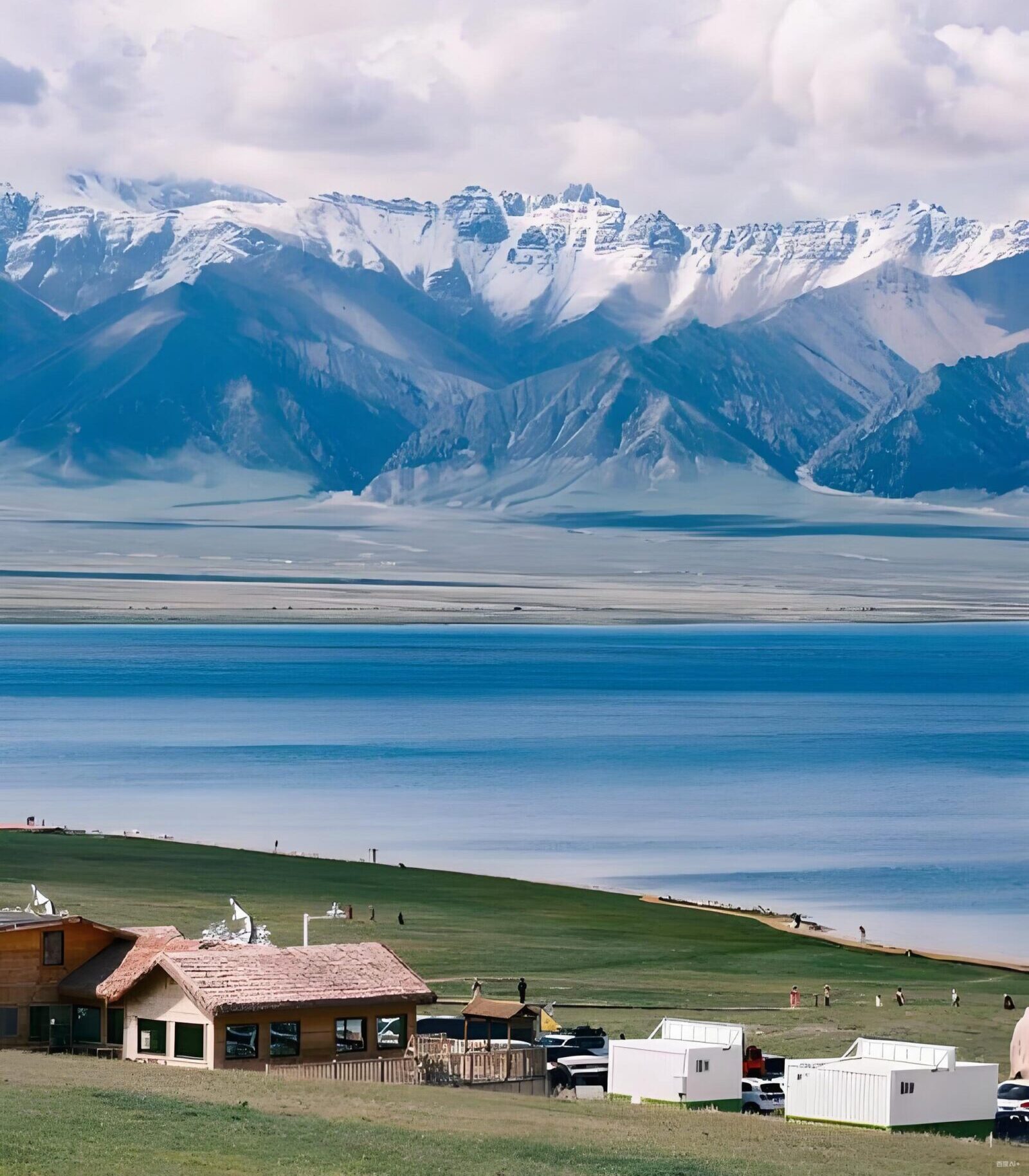
Sailimu Lake
Locals call Sayram Lake "the last tear of the Atlantic"—yeah, it's that dramatic. Sitting at 2,073 meters, this massive alpine lake shimmers blue-green against rolling grasslands and snowy peaks. It's less crowded than Kanas but just as stunning. And if you want a deeper feel for why locals call Sayram (Sailimu) Lake the dramatic name, you can dive into the Sailimu Lake in Xinjiang: Where Snow Peaks Meet Blue Waters and Kazakh Hospitality Feels Like Home for the full picture.
Sayram Lake Scenic Area — Driving Heaven's Loop
The lake loop is about 90 km—plan 4-5 hours with stops. You'll pass meadows dotted with yurts, watch Kazakh herders on horseback, and pull over every ten minutes because the views keep getting better.
Pro tips:
- Stay overnight in a lakeside yurt (¥100-200/night) for sunset and sunrise
- Bring sunscreen; UV is brutal at this altitude
- Fill up gas before entering; no stations inside
Guozigou Bridge — Instagram's Favorite Overpass
Just outside Sayram Lake, the Guozigou Bridge spans a massive valley—it's one of the highest bridges in China, and yeah, it photographs like crazy. Stop at the viewpoint (free) for that perfect shot.
Urumqi — Gateway City with Hidden Gems
- Bloom of Tianchi Lake
- Xinjiang Regional Museum
- Grand Bazaar
Urumqi's not pretty—it's sprawling, industrial, and honestly? Most travelers just use it as a transit hub. But if you've got a day or two, there are a few spots worth hitting.
Heavenly Lake — Overrated but Convenient
Heavenly Lake (Tianchi) sits at 1,910 meters in the Tianshan Mountains. It's pretty—alpine water, snow peaks, pine forests. But it's also crowded, overdeveloped, and expensive. If you've seen Kanas or Sayram, skip this. If you haven't and want a quick mountain fix before flying out? It'll do.
Real talk: The shuttle drops you at the lake, and then it's all boardwalks and selfie sticks. For better views, take the cable car to the ridgeline (extra ¥120), where you can actually breathe. To master the logistics and avoid common mistakes at this popular spot, consult the full practical guide to Tianchi Lake in Xinjiang’s Tianshan Mountains.
Xinjiang Regional Museum — Actually Worth Your Time
This museum slaps. You've got ancient mummies from the Tarim Basin (like 3,000+ years old, still with hair and clothes), Silk Road artifacts, and exhibits on Xinjiang's 13 ethnic groups. It's well-curated, air-conditioned, and gives solid context before you head to Kashgar or Turpan.
Erdaoqiao Grand Bazaar — Tourist Central
This is Xinjiang's biggest bazaar—dried fruits, spices, carpets, knives, hats, jewelry, everything. It's touristy as hell, but if you need souvenirs or just want to wander through Central Asian chaos, it's fun for an hour. Bargain hard; starting prices are ridiculous.
Turpan — Desert Oasis & Ancient Ruins
- Remains of Homes
- Flaming Mountains
- Grape Valley
Turpan's one of the lowest and hottest places in China—think 40°C in summer, sitting 154 meters below sea level in a desert basin. But it's also one of the most historically rich cities on the Silk Road, with 2,000-year-old ruins, ancient irrigation systems, and grapes. So many grapes.
Jiaohe Ancient City — Ruins That Whisper
Jiaohe was a major Silk Road city 2,300 years ago, built on a plateau and carved from mud. Today, it's a sprawling ghost town—crumbling walls, empty streets, temple ruins. Walking through it feels like stepping into an ancient desert kingdom.
It's hot, dusty, and there's zero shade—bring water, sunscreen, and a hat. But the sense of history? Unreal.
Flaming Mountains — Literal Desert Inferno
These mountains glow red-orange, especially at sunset. They're famous from "Journey to the West" (Monkey King extinguishes the flames), and yeah, they live up to the hype. Summer temps hit 70°C on the surface—you can fry an egg on the rocks.
There's a giant thermometer for tourist photos, and honestly? That's the main attraction. Still, the landscape is wild and worth a quick stop if you're driving through.
Grape Valley — Oasis Break from Desert Heat
Grape Valley is a lush canyon filled with vineyards, flowing water, and shade. It's touristy but refreshing after the desert heat. Try the fresh grapes (some varieties you won't find anywhere else), check out traditional grape-drying houses, and chill under the vines.
Karez Wells — Ancient Irrigation Genius
The Karez system is an underground irrigation network built 2,000+ years ago to bring snowmelt from the mountains to the desert. There's a museum and a section you can walk through. It's not thrilling, but if you're into engineering or history, it's fascinating to see how ancient people survived in this brutal environment.
Hotan — Silk Road's Southern Gateway
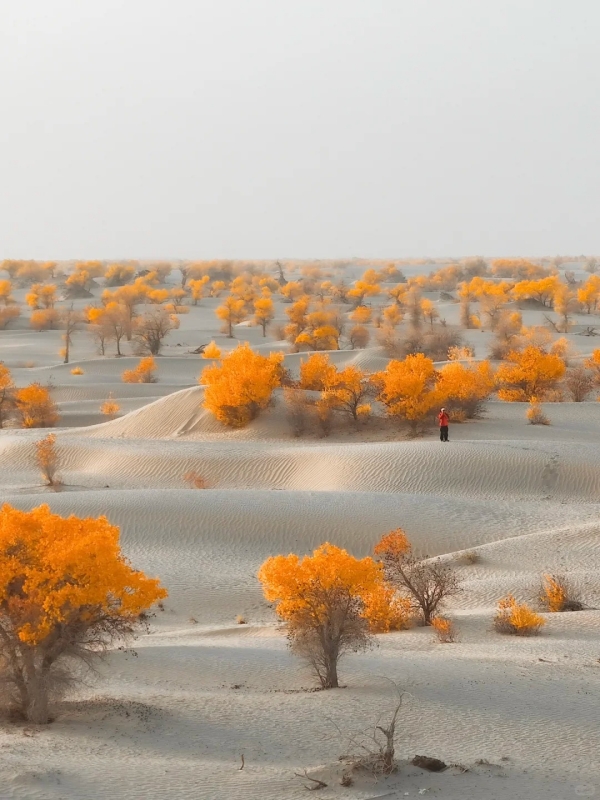
Taklamakan Desert
Hotan sits at the southern edge of the Taklamakan Desert, right on the old Silk Road route. It's less visited than Kashgar but has its own charm—jade markets, silk workshops, and ancient Buddhist ruins.
Hotan Sunday Bazaar — Locals Only Vibe
This bazaar is massive and real—locals come to buy everything from sheep to shovels. You'll see live animal trading, spice vendors, rug sellers, and food stalls serving up fatty lamb skewers. Way less touristy than Kashgar's market, which means better prices and more genuine interactions.
Melikawat Ancient City — Buddhist Ruins in the Desert
These 2,000-year-old ruins were once a Buddhist kingdom before Islam spread through the region. Today, it's crumbling stupas and clay walls slowly being swallowed by the desert. It's eerie, quiet, and gives a glimpse into pre-Islamic Xinjiang.
Not a must-see unless you're really into archaeology, but if you're already in Hotan, it's worth the trip.
Weather Strategy for Xinjiang — Pack Layers, Not Regrets
Weather Overview — One Region, Four Climates
Xinjiang's weather is extreme—scorching summers, freezing winters, and everything in between. Northern Xinjiang has alpine weather (cold nights, mild days), Southern Xinjiang is desert hot, and Turpan's basically an oven. Because of the harsh extremes—from scorching desert heat to freezing alpine nights—you must consult the Xinjiang Weather Guide: Master the 60℃ Swing and Extreme Climates for Your Perfect Trip Planning before you pack.
| City | Avg Temp (°C) | Best Months | What to Expect | Packing Tips |
|---|---|---|---|---|
| Urumqi | -10 to 25 | May-Oct | Cold winters, mild summers | Layers, warm jacket |
| Kashgar | -5 to 30 | Aug-Oct | Hot summers, cold winters | Sunscreen, warm nights |
| Kanas | -15 to 20 | Sep-Oct | Freezing winters, cool summers | Heavy layers, gloves |
| Turpan | 5 to 40 | May-Jun, Sep-Oct | Extreme summer heat | Hat, sunscreen, water |
| Sayram Lake | -10 to 15 | Jun-Aug | Cold nights year-round | Fleece, windbreaker |
Seasonal Travel Tips — When Xinjiang Actually Works
Best time: September-October (autumn colors, comfortable temps, fewer crowds)
Spring (Apr-May): Flowers bloom, but weather's unpredictable
Summer (Jun-Aug): Peak season, crowded, hot in south, perfect in north
Winter (Nov-Mar): Freezing, many attractions closed, but skiing's great
Avoid: Chinese holidays (Oct 1-7, Spring Festival) unless you love crowds and tripled hotel prices.
Travel Tips for Xinjiang — Smooth Rides and Smart Moves
Transportation — How to Actually Get Around
| Method | Best For | Notes |
| Flights | Urumqi to Kashgar, Yining | Fast but expensive (¥500-1,200). Essential for covering long distances quickly. |
| Trains | Urumqi to Turpan, Kashgar | Overnight saves on hotel costs; sleepers are scenic and budget-friendly. |
| Buses | Smaller towns, day trips | Cheap but slow and basic. Used primarily for short regional hops. |
| Car hire | Kanas, Sayram, Pamir Highway | Offers maximum freedom but requires a Chinese driver's license (or hiring a local driver). |
Real talk: Distances in Xinjiang are brutal—Urumqi to Kashgar is 1,500 km. Fly when you can, take overnight trains when you can't, and factor in full travel days when planning your itinerary.
Altitude and Climate — Don't Ignore This
Start slow: Kashgar and Tashkurgan are at 3,000–4,000m; allow time to acclimate first. Mild altitude sickness is common.
Hydrate: Dry air and high altitude lead to constant dehydration; drink plenty of water.
Layers: Temperatures swing dramatically; mornings are often freezing, while afternoons can be hot.
Sunscreen: UV radiation is brutal at high altitude and in the deserts—apply frequently.
Accommodation — Where to Sleep
| Category | Accommodation Type | Price Range | Key Features |
| Budget | Hostels | ¥80–150/night | Found in Kashgar, Urumqi; best for solo travelers and budget backpackers. |
| Mid-range | 3-star hotels | ¥200–400/night | Clean, often centrally located; a comfortable and reliable base. |
| Splurge | International chains | ¥600+/night | Found in major cities like Urumqi; offers modern amenities and comfort. |
| Unique | Yurts / Tuva guesthouses | ¥100–300/night | Found in Kanas/Sayram Lake/Hemu; provides an atmospheric local cultural experience. |
Pro Tip: Book early for September-October (peak autumn season). Hotels fill up fast, especially in Kanas and Hemu villages.
Cultural Sensitivity — Respect Goes a Long Way
Photography: Always ask for permission before shooting close-ups of people, especially elders.
Mosques: Modest dress is required; remove shoes before entering the prayer hall. Do not take photos during prayer times.
Food: Halal is standard. Do not bring pork products or alcohol into Muslim-owned restaurants or conservative areas.
Ramadan: If visiting during Ramadan, respect fasting hours; many restaurants may be closed during the day.
Frequently Asked Questions — Xinjiang Travel Made Simple
Q: Are there travel restrictions for foreigners in Xinjiang?
Most areas stay open and easy to access, and you can explore major xinjiang attractions without stress. You may face casual ID checks, so carry your passport for smooth movement. Hotels register you automatically, and only border zones need permits, which agencies can arrange. Keep your plans flexible, avoid restricted sites, and follow local guidance to keep your trip simple.
Q: Is Kashgar or Kanas better for first-timers?
Both shine in different ways, and each offers standout xinjiang attractions worth a deep dive. Kashgar brings old Silk Road vibes, vibrant bazaars, and unique culture. Kanas delivers unreal lakes, forests, and mountain scenery. If you want a classic first trip with rare experiences you won’t find elsewhere, pick Kashgar.
Q: How long do I need in Xinjiang?
Travel times run long, and major xinjiang attractions spread far apart, so plan with patience. A week covers one region; ten to fourteen days cover both north and south. Rushing in under five days leaves you stuck on buses and flights rather than enjoying the landscapes and culture.
Q: What's a realistic daily budget?
Costs depend on how you tackle xinjiang attractions. Budget travelers spend 200–300 RMB with hostels and street eats. Mid-range comes in at 500–700 RMB with solid hotels and taxis. Over 1,000 RMB daily suits private drivers and tours. Transport and entry fees add up fast.
Q: Is the food actually good?
Uyghur dishes fuel long days exploring xinjiang attractions with hearty flavors and fresh ingredients. Expect lamb skewers, pilaf, noodles, and fruit everywhere. If you’re vegetarian, options shrink, so bring snacks. The cuisine leans Central Asian, bold, and comforting.
Q: Do people speak English?
Even around popular xinjiang attractions, English stays uncommon. Locals stay warm and patient, but translation apps help you move faster. Keep Chinese names for hotels and stations ready to make travel smoother.
Q: Is it safe for solo travelers?
Traveling solo around xinjiang attractions feels secure thanks to low crime and helpful locals. Women report positive experiences, especially with modest clothing in conservative towns. Stay aware but relaxed.
Q: Should I join a tour or go independent?
City areas near xinjiang attractions work fine for independent travelers. Remote regions like Kanas or the Pamir Highway benefit from tours or drivers because routes get tough and language barriers slow progress.
